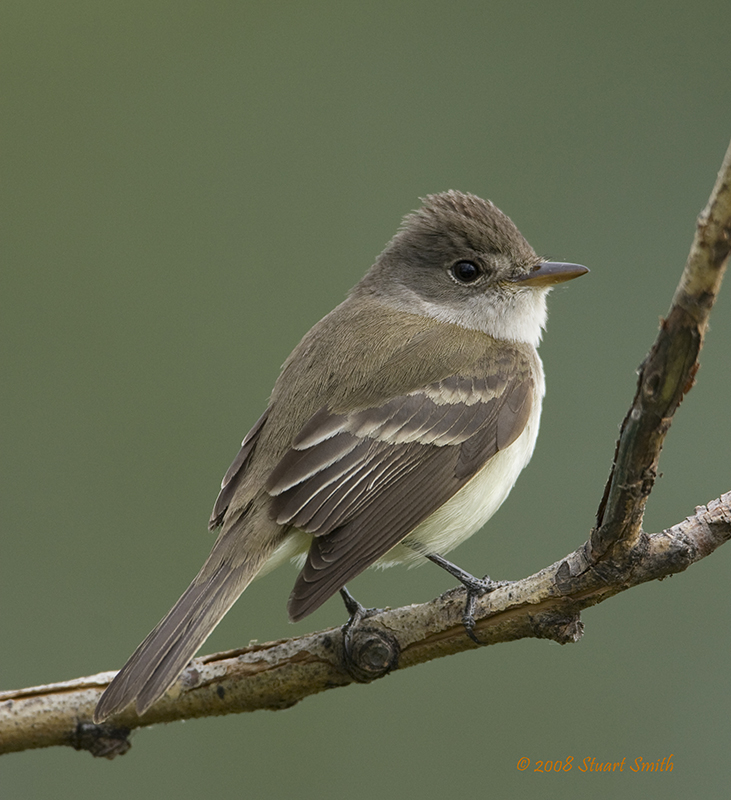
Empidonax traillii
SUBFAMILY
Fluvicolinae
TAXONOMY
Empidonax traillii Audubon, 1828. Five subspecies.
OTHER COMMON NAMES
French: Moucherolle des saules; German: Weidentyrann;
Spanish: Mosqueta Saucera.
PHYSICAL CHARACTERISTICS
5.75 in (14.5 cm). Plumage includes a brownish to brownish
green head, brownish green upperparts, dark wings with buff
to yellow wing bars, pale yellow trim on tertials and secondaries,
a dark tail, a thin, pale eye ring, pale lores, whitish underparts,
and dusky side flanks tinged with yellow. Feet and
legs are blackish, and bill is blackish with a yellowish pink
lower mandible. Plumage color varies somewhat with region;
for example, northwestern races have a dark head, while southwestern
races have a pale head. Sexes are similar.
DISTRIBUTION
Breeding is mostly restricted to the continental United States,
including the northwestern states, Rocky Mountains, Great
Plains, Midwest, and northeastern regions.
HABITAT
Prefers shrubs and undergrowth, willow thickets, fresh water
marshes, ponds, rivers, and lakes.
BEHAVIOR
Silent in migration, but otherwise sings a sharp “fitz-bew!” or
“fitz-be-yew!” Also releases a loud “whit!” Perches low, below
top of vegetative layer; chooses an exposed perch to sing. During
courtship, males chase females in flight.
FEEDING ECOLOGY AND DIET
Perches to spot prey, sallies forth to catch prey in midair, and
returns to the same perch. Feeds on flying insects, insects
gleaned from foliage, spiders, and occasional berries.
REPRODUCTIVE BIOLOGY
Monogamous breeders. Nest is cup-shaped and compact, often
with hanging streamers, built by female in the fork of a deciduous
tree. One clutch per year of two to four eggs, incubated
by female for 12 to 15 days. Juveniles remain in the nest for 12
to 14 days, fed by both sexes.
CONSERVATION STATUS
Not threatened, though populations on the west coast are declining
due to loss of streamside habitat, particularly caused by
grazing animals. Nests are parasitized by the brown-headed
cowbird (Molothrus ater). May also be imperiled by loss of tropical
wintering habitat due to deforestation.
SIGNIFICANCE TO HUMANS
None known.
Photo Gallery of - Willow flycatcher
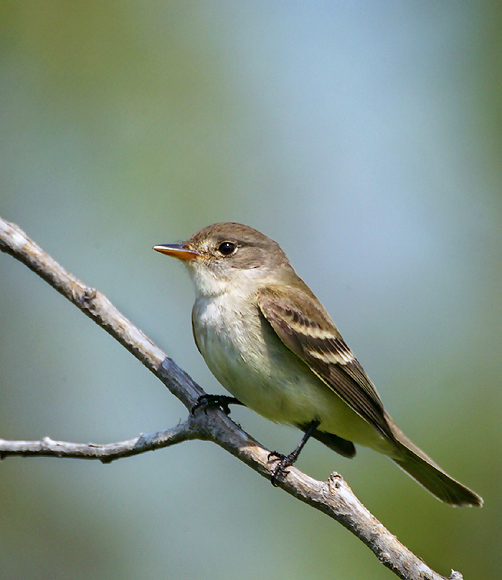
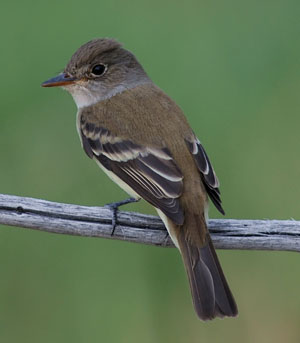
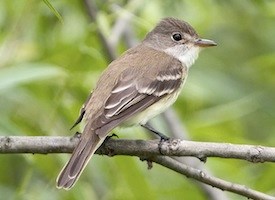
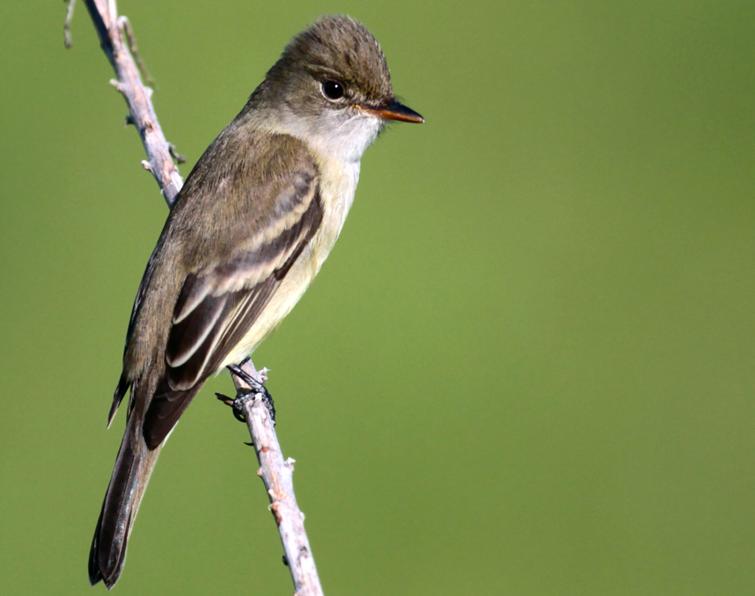
 Animalia Life
Animalia Life